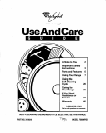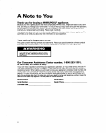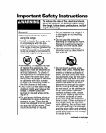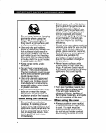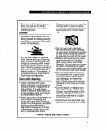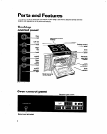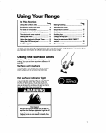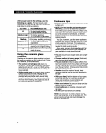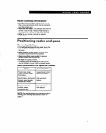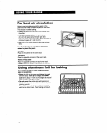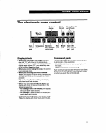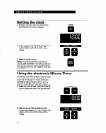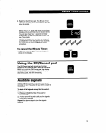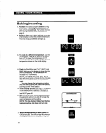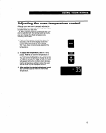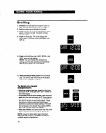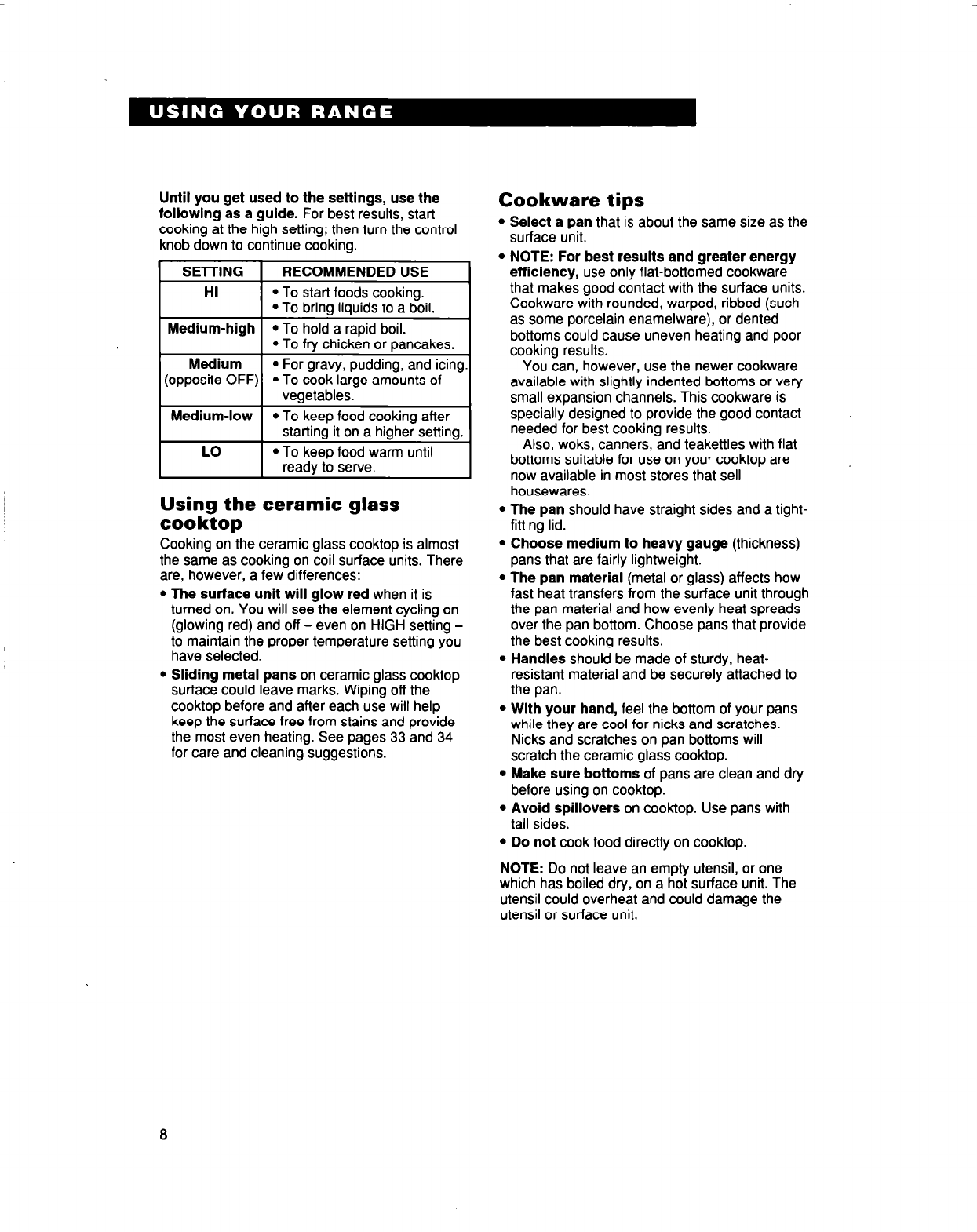
Until you get used to the settings, use the
following as a guide. For best results, start
cooking at the high setting; then turn the control
knob down to continue cooking.
SETTING RECOMMENDED USE
HI
l
To start foods cooking.
l
To bring liquids to a boil.
Medium-high
l
To hold a rapid boil.
l
To fry chicken or pancakes.
Medium
l
For gravy, pudding, and icing.
(opposite OFF)
l
To cook large amounts of
vegetables.
Medium-low
l
To keep food cooking after
starting it on a higher setting.
LO
l
To keep food warm until
ready to serve.
Cooking on the ceramic glass cooktop is almost
Using the ceramic glass
the same as cooking on coil surface units. There
cooktop
are, however, a few differences:
l
The surface unit will glow red when it is
turned on. You will see the element cycling on
(glowing red) and off - even on HIGH setting -
to maintain the proper temperature setting you
have selected.
l
Sliding metal pans on ceramic glass cooktop
surface could leave marks. Wiping off the
cooktop before and after each use will help
keep the surface free from stains and provide
the most even heating. See pages 33 and 34
for care and cleaning suggestions.
Cookware tips
l
Select a pan that is about the same size as the
surface unit.
l
NOTE: For best results and greater energy
efficiency, use only flat-bottomed cookware
that makes good contact with the surface units.
Cookware with rounded, warped, ribbed (such
as some porcelain enamelware), or dented
bottoms could cause uneven heating and poor
cooking results.
l
The pan should have straight sides and a tight-
fitting lid.
You can, however, use the newer cookware
available with slightly indented bottoms or very
small expansion channels. This cookware is
specially designed to provide the good contact
needed for best cooking results.
Also, woks, canners, and teakettles with flat
bottoms suitable for use on your cooktop are
now available in most stores that sell
housewares.
l
Choose medium to heavy gauge (thickness)
pans that are fairly lightweight.
l
The pan material (metal or glass) affects how
fast heat transfers from the surface unit through
the pan material and how evenly heat spreads
over the pan bottom. Choose pans that provide
the best cooking results.
l
Handles should be made of sturdy, heat-
resistant material and be securely attached to
the pan.
l
With your hand, feel the bottom of your pans
while they are cool for nicks and scratches.
Nicks and scratches on pan bottoms will
scratch the ceramic glass cooktop.
l
Make sure bottoms of pans are clean and dry
before using on cooktop.
l
Avoid spillovers on cooktop. Use pans with
tall sides.
l
Do not cook food directly on cooktop.
NOTE: Do not leave an empty utensil, or one
which has boiled dry, on a hot surface unit. The
utensil could overheat and could damage the
utensil or surface unit.
8



